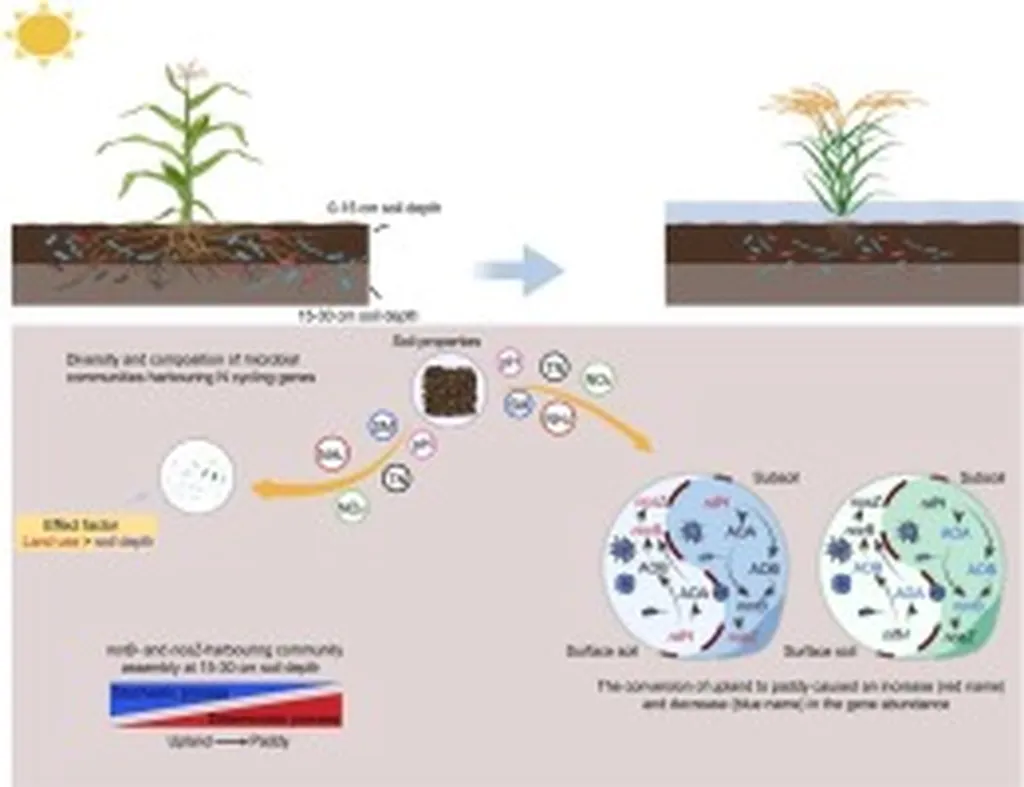In the heart of China’s agricultural landscape, a significant shift is underway. To bolster food security, vast tracts of non-grain cultivated land are being converted into paddy fields. But what does this transformation mean for the soil that sustains our crops? A recent study published in the *Journal of Microbiology* (English translation) sheds light on this very question, offering insights that could reshape our approach to land conversion and soil health.
Led by Xuqing Li from the Institute of Vegetable, Hangzhou Academy of Agricultural Sciences, the research delves into the intricate world of soil microbial communities and their response to land conversion. The study, which analyzed 72 soil samples from various converted paddy fields and their corresponding non-grain cultivated lands, reveals a complex interplay between soil properties, bacterial communities, and metabolites.
The findings are striking. Conversion to paddy fields led to a significant reduction in key soil nutrients like organic matter, alkaline hydrolysis nitrogen, available phosphorus, available potassium, and microbial biomass carbon. “We observed reductions ranging from 5.12% to 92.52%,” Li notes, underscoring the dramatic impact of land conversion on soil health. However, the story doesn’t end there. The study also found a substantial increase in the relative abundance of certain bacterial groups, such as Chloroflexi, Desulfobacterota, and Nitrospirota, suggesting a shift in the soil’s microbial ecosystem.
But perhaps the most intriguing aspect of the research is the discovery of 2,204 differentially expressed metabolites (DEMs) in the soil. These metabolites, which include amino acids, lipids, and organic acids, were found to be significantly correlated with specific bacteria, indicating a complex network of interactions that help coordinate the soil community during conversion. “These correlations suggest that bacteria play a crucial role in maintaining soil health during land conversion,” Li explains.
So, what does this mean for the future of agriculture and the energy sector? The study highlights the importance of understanding and managing soil microbial communities during land conversion. By doing so, we can ensure the long-term productivity and sustainability of our agricultural lands. For the energy sector, this research could open up new avenues for bioenergy production, as the identified metabolites and bacterial groups could potentially be harnessed for biofuel production.
As we continue to grapple with the challenges of food security and climate change, studies like this one serve as a reminder of the intricate web of life beneath our feet. By unraveling these complexities, we can pave the way for a more sustainable and resilient future. “This research provides a scientific basis and supporting evidence for the renovation of non-grain cultivated land,” Li concludes, offering a glimpse into the transformative potential of soil microbiology.
In the ever-evolving landscape of agriculture, one thing is clear: the soil beneath our feet is not just a substrate for plant growth, but a dynamic ecosystem that holds the key to our future. And as we continue to explore this ecosystem, we may just unlock the secrets to a more sustainable and secure future for us all.

